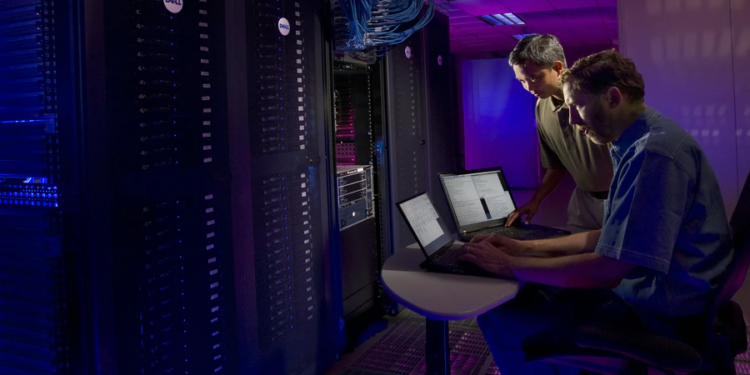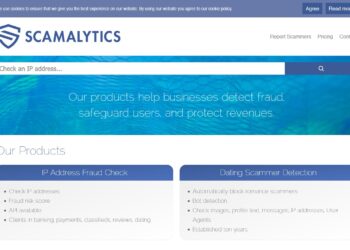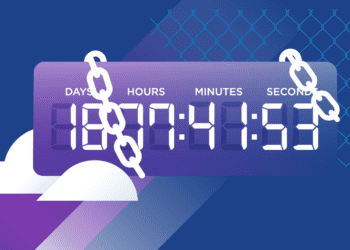Ensuring physical cybersecurity has many components. Security directors need to assess the foundations of their assets, resources, and capabilities before drafting a security program.
Planning Physical Cybersecurity
Security directors need to research and develop a comprehensive plan. They will need to define their role and responsibilities as security directors–assuming they will have multiple people that will handle physical security and cybersecurity, and decide whether to hire security officers or outsource security to third parties.
Next comes the details. Access control must be done at all entry points. Policies for common areas doors inside the building are necessary and parking facilities should be given attention. Consider the logistics involved in enforcing these security policies within the building. Security officers must patrol the grounds regularly tended to, greeting tenants and visitors and deterring trouble when it arises.
How do security directors ensure physical cybersecurity? In this article, we will explore 10 essential steps to ensure physical cybersecurity for businesses and institutions.
1. Protection against Dumpster Diving
What if theft wasn’t illegal? This is the essence of dumpster diving. If you aren’t careful, it’s one of few legal ways that others can steal your sensitive information. The legality and relative ease of it make it inherently dangerous.
You can protect yourself by making sure nobody is allowed to enter your building and steal your trash and other discarded materials. You must ensure that all sensitive documents are securely destroyed. You should ensure that any remote shredding service has a chain of custody controls which will allow you to track who owns the document.
2. Site Access Control
Are you aware of who has access to your property? This is especially important in sensitive areas where data is stored and handled. If the wrong person gains access to your data, it can lead to disaster.
There are many modern tools that can help you improve your access control. You can explore a system like EcoStruxure that comes with a mobile system that allows access to specific people within the directory using smartphones and other devices. Another function to look for is the one that allows you to expand access to guests on a controlled basis.
3. Employee Awareness Training
Negligent employees are the number one cause of cybersecurity breaches. Your teams don’t fully understand the importance of cybersecurity and the steps to take to protect the company.
This is why training for employees comes in. Cybersecurity all starts with accountability. Encourage your employees to report suspicious behavior. Think about this: Could a man with a clipboard and a pen walk through your office, take notes, and not know anyone? And yet, avoid being questioned. Employee awareness training should be focused on one theme: Avoid the SEP field.
4. Secure Network-Enabled Printing
Network printers can be very convenient. These printers allow everyone in an office to connect without additional wiring. Unfortunately, they are also a security risk. Many of them offer open wifi access by default, which allows anyone to gain access and expose vulnerabilities.
We’ll guess that you probably don’t want your printer hacked by a phone on a drone. You can prevent this from happening by taking inventory of your network devices and connecting only those devices to the internet that are actually needed. Remote access is not necessary if the printer is used only by employees of your company. You can also add passwords to the connection.
5. Building Secure Guest WiFi
Guests and visitors will likely want internet access when they visit. Guest WiFi is an ideal solution. It also gives access to external users to your network. Segmenting your networks isolates Guest WiFi and your data from internal devices. Encrypt wireless signals and change the default passwords for all devices. This segmentation allows your visitors to safely use the internet without any potential problems.
6. Protect Your Windows
It is as easy as walking through the building to establish physical cybersecurity. Everybody loves a window in their office. But what if that window could be used to access and exploit your data by someone else? Naturally, you would want to avoid this potential exploitation.
Hackers will try anything to gain access to data you have, even if it’s just looking through the window. You should know how to position your screens and other devices. This will make it easy to protect your team against prying eyes who may try to collect sensitive information or surf passwords.
7. Accounting for Lost or Stolen Devices
The possibility of devices being stolen or lost becomes greater as they become more mobile. You don’t want your employees to lose their laptop on the subway. Do you have a plan in place for when human error happens?
Mobile Device Management systems can help you take some of those preparations. You can remotely lock down and possibly swipe any stolen or lost devices within your company using the right platform. You’re protected even if someone else takes it.
8. How to Lock Your Servers
Secure any area of your business that contains actual data. This includes locking the office doors and ensuring that all server areas are protected. This will prevent anyone from simply walking in and taking the storage containers and walking out.
9. Implementing Video Surveillance Systems
A video surveillance system might be better for secure premises. Yes, locking the doors and servers can be helpful. But that’s not all. A video system can make it easy to see what’s happening, that’s why most buildings and areas now use CCTVs within their premises.
The mere existence of cameras can deter hackers. The second is that video footage can be used to keep an eye on the entire area. Third, if something does happen, it is easy to reconcile it, get it secured, and capture the perpetrator.
10. Protecting Your Backups
Consider the importance of data backups to your business. You can prevent data loss from outages and other disasters by having physical backups. However, they can also be a security risk.
Many businesses forget to secure their backup devices and servers. Yet, they keep the exact same data. They can be stolen by anyone. Because they are your most sensitive information and confidential data, you should treat them the same way as you would.
While systems and devices make things easier for us, these things become easily vulnerable for cyberattacks and data stealing. In a world where data is king, we need to intensify securing our data and these are just some of the most essential things you need to do to ensure physical cybersecurity.
How would you ensure physical cybersecurity? Share your thoughts in the comments!






